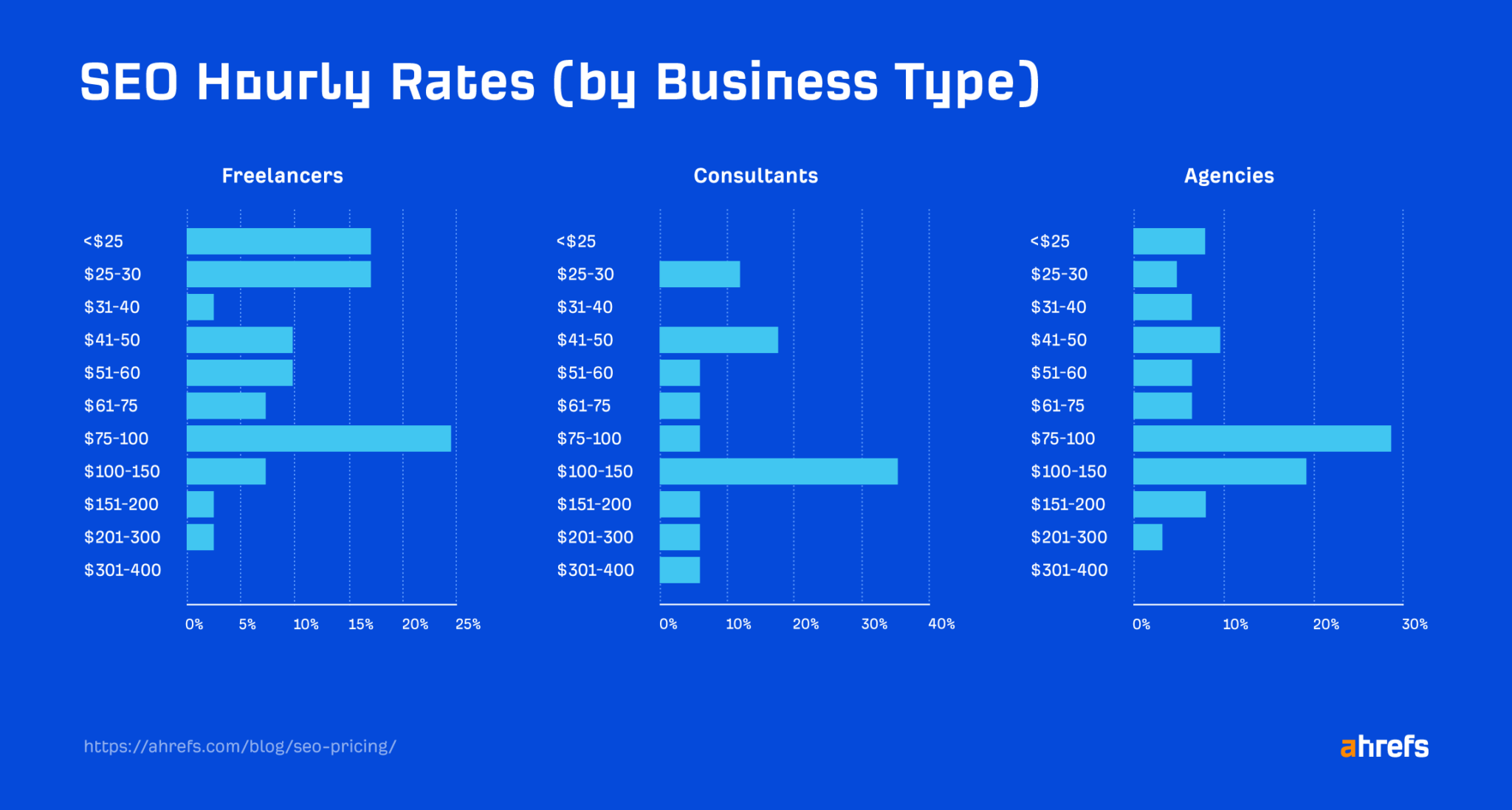As an experienced practitioner in the digital marketing realm, I recognize the necessity of crafting content that solves a problem for your audience and improves organic visits to your website.
We will explore the concept of white-label content marketing and how white labeled services can greatly benefit your business.
In our guide, you’ll learn about what roles a white label content supplier will cover and why partnering with the RIGHT white label content marketing agency can be an effective way to make more money for your digital marketing agency.
We’ll also delve into the benefits of using white-label content services, including cost-effectiveness, scalability, and increased efficiency.
So let’s dive in!

What is White Label Content Marketing?
White label content marketing is an effective way for businesses to outsource their content creation and SEO services at an affordable rate.
White-label content services provide an opportunity for businesses to delegate their content production and SEO requirements, allowing them to concentrate on other aspects of the enterprise while having a professional squad take care of writing, refining, and optimizing their online material.
By doing a simple hourly calculation based on your agency’s billable hourly rate, you can easily see how cutting down on admin-intensive tasks will put money straight back into your bank.
By white-labeling time-consuming tasks like creating content briefs, keyword research, or content strategy, agencies will save both time and money instead of having to employ extra personnel or pay individual freelancers.
Additionally, since white label providers are typically experienced professionals in their field, they often provide higher-quality results than what could be achieved in-house.
By leveraging a provider’s knowledge and experience, agencies can ensure they remain competitive in an ever-changing landscape where new techniques emerge regularly.
Why is Content Marketing Crucial for Businesses?
According to Search Engine Land, content marketing should be part of every business’s growth strategy in today’s digital landscape.
By providing quality content that engages readers, solves a problem, and offers them something of value, businesses can establish themselves as thought leaders in their industry while also generating traffic, leads and increased sales.
Quality Traffic:
Quality content drives organic search engine traffic to your site.
Organic search engine visitors who come across your website are more likely to be captivated by its content than those arriving through ads or social media.
When someone finds the information they need on your website quickly, it increases the chances of them staying longer and engaging with other pages on your site, which then translates into higher rankings for related keywords over time.
Increased Visibility:
Content creation gives businesses visibility and brand awareness across multiple platforms, such as blogs, industry news sites, and social media.
This increased visibility also creates opportunities for link building, another important factor when it comes to boosting rankings in SERPs (Search Engine Results Pages).
Businesses can foster relationships with their customers and cultivate loyalty by leveraging storytelling techniques such as personalization and customer-centricity within blog posts, videos, etc.
Content marketing is an essential part of any business’s success, as it helps to create a strong online presence and drive more traffic to your website.
By utilizing the right tactics, content marketing can be employed to attain your objectives. Now let’s explore how we can create effective content that will engage customers and generate results.
How to Create Effective Content
Generating efficient material is indispensable for any firm desiring to raise their online profile and visibility.
Content marketing is an essential part of SEO, as it helps search engines understand what your website or blog post is about and why it should be ranked higher than other pages.
But creating effective content isn’t always easy. It requires careful planning, research, and execution in order to create content that resonates with your target audience.
Topic ideation is the first step in creating effective content.
This involves brainstorming ideas for topics related to your industry or niche that are both interesting and relevant to your readership.
A great way to do this is by using keyword data analysis tools like Google Keyword Planner or Moz’s Keyword Explorer, which can help you identify popular terms used by people searching for information on a particular topic.
Additionally, researching competitors’ websites can provide insights into how they are addressing certain topics and give you ideas for new angles you could explore in your own writing.
Topic Ideation:
Brainstorming ideas for topics that are relevant to your industry and audience should be the first step in creating effective content.
Think about what questions people may have about the products or services you offer or topics related to them that could interest readers.
Also, consider trends in the market and use keyword data analysis tools like Google Trends to see which topics are currently popular among users so you can capitalize on them with timely pieces of content.
Content Calendars:
Once you’ve identified potential topics for your blog posts or other forms of written content, create a calendar outlining when each piece will be published over time so that there’s consistency across all channels where it will be shared (e.g., social media).
By scheduling posts in advance, readers can anticipate when fresh content will arrive and won’t be overloaded with a barrage of updates from disparate sources simultaneously.
Creating effective content requires a combination of knowledge, skill and creativity. Topic ideation is the process of generating ideas for potential topics that can be used to create engaging content.
What Is Topic Ideation?
Topic ideation is the process of identifying topics to target and engage a quality audience.
It involves researching keywords and understanding user intent, so that you can create content that resonates with your readers.
To do this effectively, it’s important to understand how search engines work and what types of content they prioritize.
When creating content for SEO purposes, keyword research is key. In order to guarantee that potential customers or clients will see your content, you must identify relevant search terms.
Coming up with ideas that captivate your intended readers is a key component of content marketing; it’s essential to have an efficient brief in place before initiating the topic ideation process, as this will help steer you through the imaginative journey and guarantee all topics generated meet set goals.
It’s important to have an effective content brief in place before beginning the topic ideation process, as this will help guide you through the creative process and ensure that all topics created meet specific objectives.

The Importance of Content Briefs
Content briefs are the blueprints for content creation. They provide writers with all of the necessary information to craft an effective piece of content. Without a good brief, it’s impossible to create a quality piece that meets your goals and objectives.
Constructing a structure without blueprints is akin to creating an article devoid of guidance; the outcome will be unsatisfactory and fall short of expectations.
Unfortunately, creating an effective content brief takes time and effort. You need to research topics thoroughly, come up with ideas, plan out how the content should be structured, decide on keywords and other SEO elements, and the list goes on. That’s why the SEO Back Office is here to help.
At The SEO Back Office, we are devoted to supplying outstanding content outlines rapidly and effectively so you can return to the important task of making excellent material for your customers.
This allows us to not only create better pieces of content but also identify opportunities for growth within campaigns that may have been overlooked otherwise, further boosting overall ROI (Return On Investment).
The importance of content briefs cannot be overstated, as they provide the foundation for successful content creation. Let’s look at the difficulties that could arise when generating content.
Challenges of In-house Content Creation
Content creation can be challenging for agencies. The amount of time needed to conduct in-depth keyword research, topical analysis and content planning can be tolling.
In an agency’s eyes, time is money. Having an experienced full-time resource waste hours on research tasks is a waste of revenue.
Working with a skilled white label company minimizes time wastage and frustration and will save you money.
Apart from skilled staff having to work on admin-intensive tasks, SEO tools can become costly very quickly.
Drawbacks of In-house Content Creation
- Waste of internal resources
- Expensive tools
- Staff getting sick or being absent
- Very time-consuming
- Waste of billable hours
Let’s dive into hourly rates to further understand how white-labeling your content process can improve your bottom line.
Average SEO Agency Hourly Cost
Toward the end of 2022 (updated in January 2023), Ahrefs conducted a detailed survey that engaged with over 350 members of the SEO industry to find out how much they charge for SEO and content-related services.
From their data, they found the following:
‘The most common hourly rate for SEO agencies and freelancers is the same: $75–100/hour.
For SEO consultants, it’s $100–150/hour.
Assuming that all surveyed SEOs charge the upper end of their pricing tier (e.g., $150, from $100–$150), then take the average hourly rate for each subset (Agency, Freelance, Consultancy), here’s what we get:
- Consultancies: $171.18/hour, on average.
- Agencies: $98.90/hour, on average.
- Freelancers: $71.59/hour, on average.’

Assuming that it takes 2 hours to craft a detailed content brief from start to finish, that content brief is worth $197.80 of billable time for an agency.
Taking the average cost of a content strategist with 4–6 years of experience in the USA as roughly $81,750 per year (based on data from Glassdoor), their hourly cost to the company is $42.57 per hour (based on 40 working hours per week or 160 working hours per month).
Using these calculations, one content brief is costing you $85.14 per brief.
In our experience, 10 content briefs per month is the general need for clients to keep up with consistent content creation.
This brings the cost of 10 contents for ONE client to $851.40! Now, multiply that cost by the total number of your clients that need content created each month; this shows you how content tasks handled in-house are very costly.
FYI – 20 content briefs created by the SEO Back Office will cost you $75 per brief!
Here’s the official number:
Creating 20 content briefs in-house: $1,702.80
Using SEO Back Office:$1,500
You save $202.80.
From this basic calculation, we see that just creating content briefs on their own takes time and often requires an additional set of eyes for quality assurance checks.
All these steps add up quickly and can easily eat away at valuable time that could otherwise be spent on other projects within your business—not ideal.
When budgeting for content creation, one must take into account not only the cost of outsourcing or purchasing tools or software to help with production but also any specialist skills that may be required, such as graphic design and video production.
Although cheaper options exist, like stock images, they won’t cut it when it comes to crafting truly effective campaigns, so keep in mind the additional costs associated with hiring freelance professionals who charge by the hour.
Creating content of a high standard is an arduous and expensive undertaking. It requires an investment of both money and time in order to produce results that can drive organic traffic, engage audiences, and ultimately generate sales.
As such, it’s important for any digital marketing agency or white-label content creation company to understand the challenges they may face when creating original content.
Producing material can be difficult, but with the right methods and resources in place, it is achievable to craft effective content that produces results. Moving on from here, let’s explore how you can measure your content’s performance for further optimization.
How to Measure Your Content Performance?
Analyzing performance metrics such as traffic sources, conversion rates, CTRs, time on page and bounce rate is essential for gauging the success of a digital marketing campaign.
By analyzing the effectiveness of content, businesses can optimize their strategies to ensure they are getting the desired results.
In order to measure your content’s performance, you need to analyze a variety of metrics, including traffic sources, conversion rates, click-through rates (CTR), time on page, bounce rate and more.
Analytics tools such as Google Analytics can be invaluable in gaining insight into the origin of your website’s visitors.
These tools allow you to track visits from different sources, such as organic search engine results or social media campaigns so that you can identify which channels are driving the most visitors.
Keep an eye open for any abrupt increases in web traffic; these may point to a potential trend or possibility that merits further investigation.
Conversion rate is another important metric when measuring content performance; this indicates how many people who visit your site take action by signing up for newsletters or making purchases.
To increase conversions, consider testing different headlines and calls-to-action on pages with high exit rates or low conversion numbers; this will help determine what works best for your audience and improve overall success rates.
If conversions aren’t hitting the mark, then it’s time to take a step back and re-evaluate either the messaging within the piece or who is viewing/reading it.
To ensure your content is resonant and effective, it’s necessary to assess its performance through metrics such as traffic sources and conversion rates.
Analyzing traffic sources, conversion rates, and other metrics is key when assessing how successful your content creation efforts have been.
All these analytics together will help inform decisions about future campaigns and ensure maximum return on investment from every piece created going forward.

Conclusion
It requires careful planning, topic ideation sessions, creating effective briefs and measuring performance regularly in order to ensure that your efforts are successful.
With the right strategy and resources, white-label content marketing can be an invaluable asset for any business looking to expand its reach online.
Take your SEO agency to the next level with our white-label content and SEO services.
Let us help you save time, money, and resources while delivering exceptional results for your clients.


